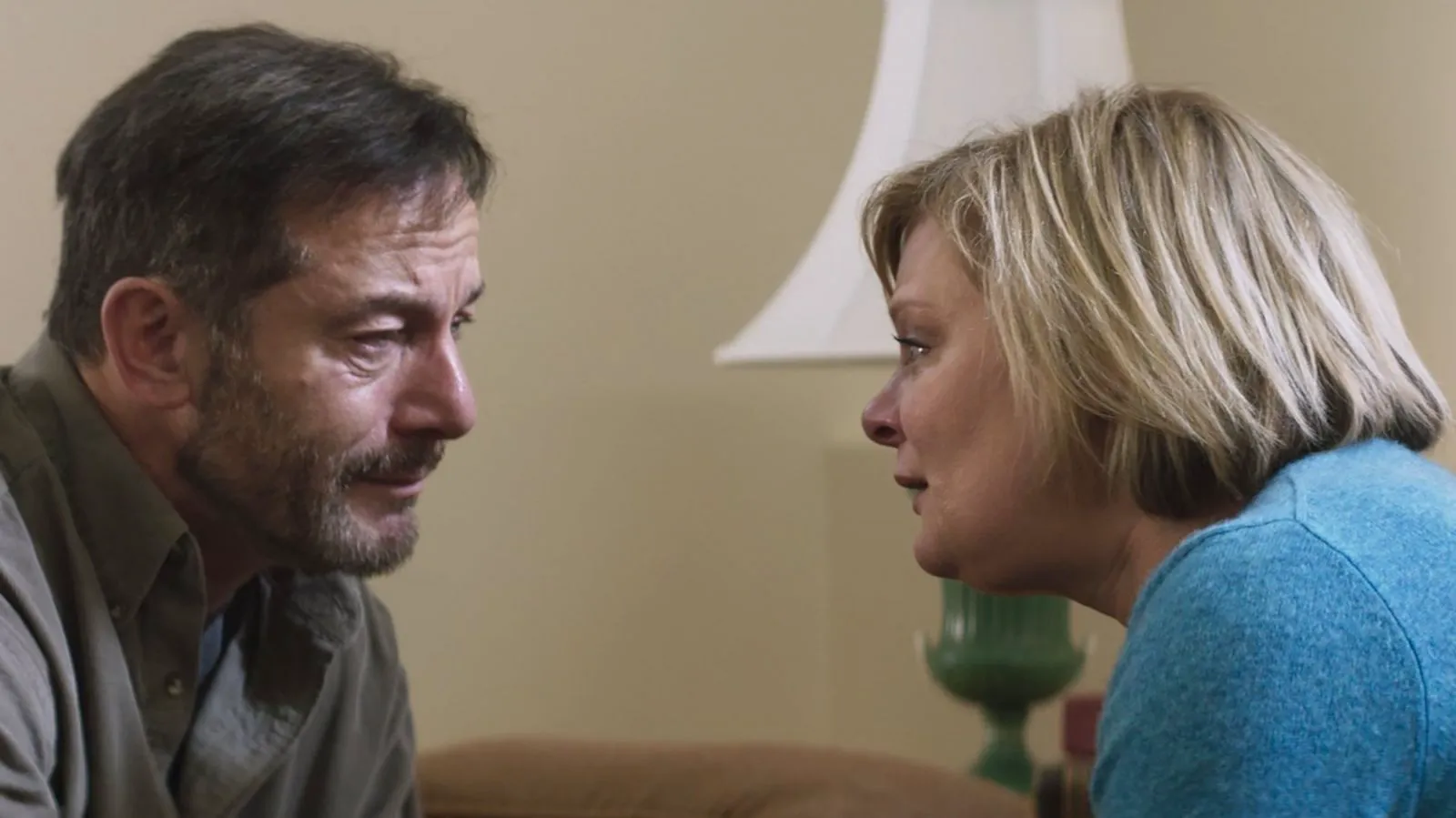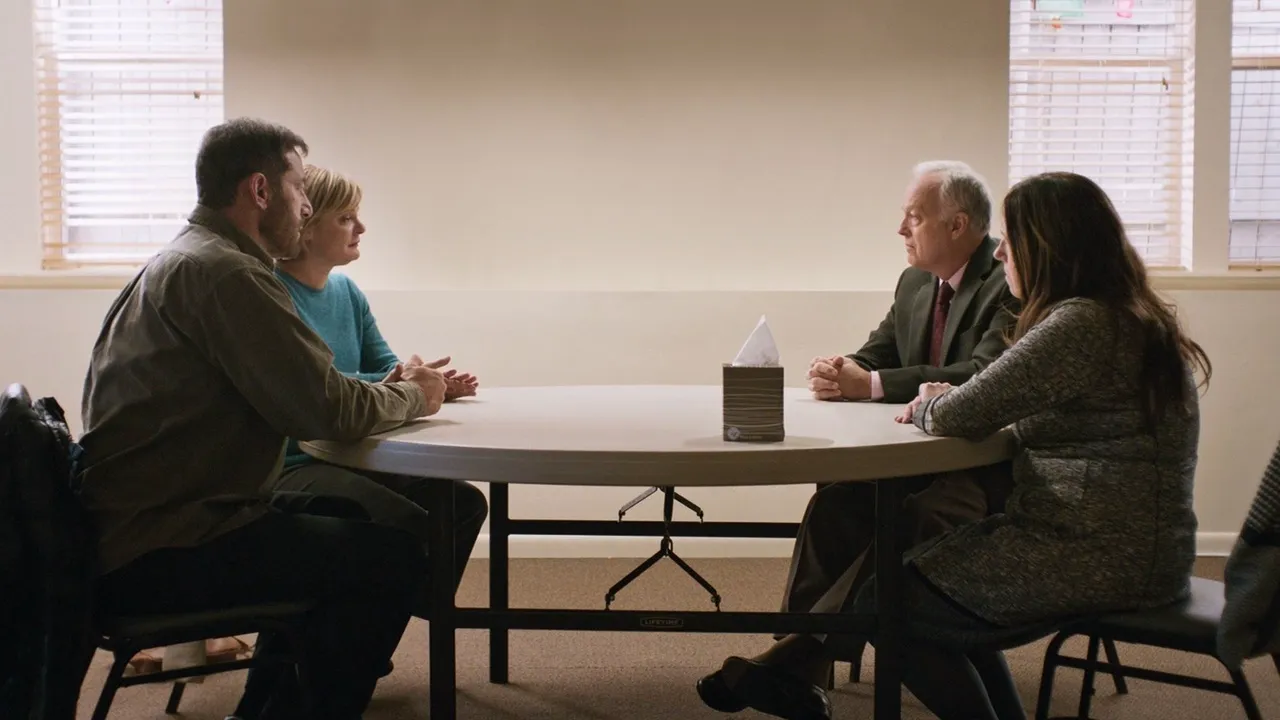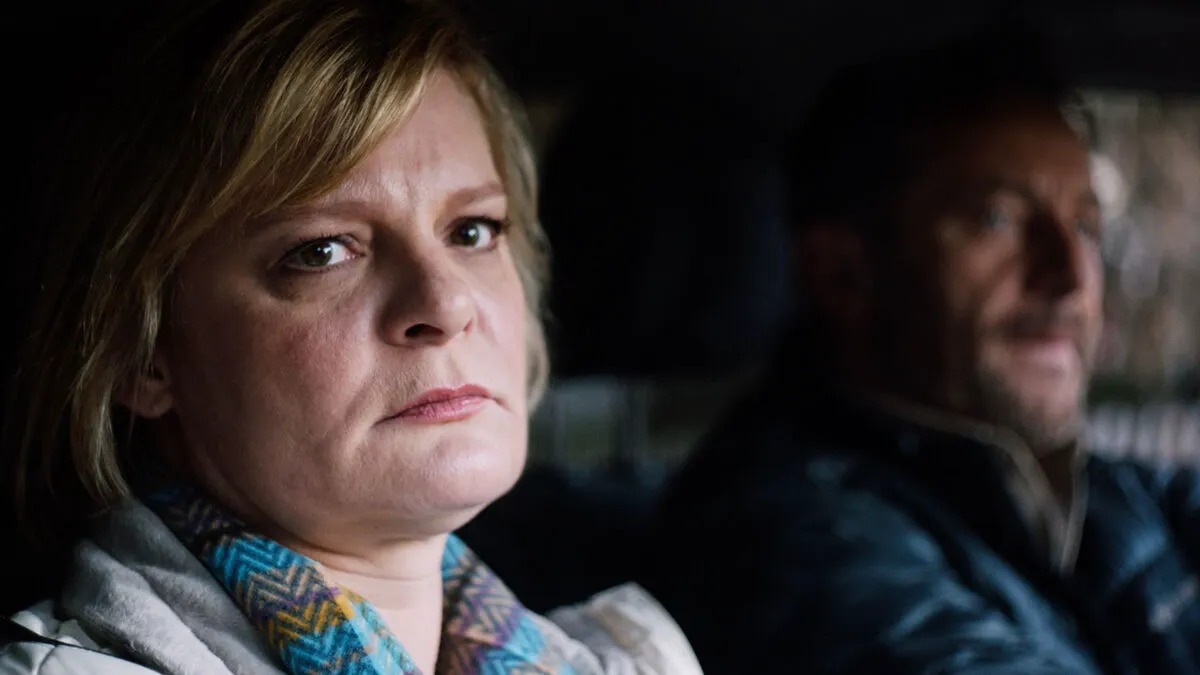Unraveling Trauma: When Parents of Victim and Perpetrator Seek Common Ground
Years after a school shooting shattered their lives, Linda (Ann Dowd) and Richard (Reed Birney), the parents of the shooter, seek a meeting with Gail (Martha Plimpton) and Jay (Jason Isaacs), whose child was among the victims. Their aim: to confront the tragedy, share their perspectives, and grapple with the unanswerable questions that haunt them.

Martha Plimpton as Gail in “Mass”
A Setting for Confrontation
In the basement of a quaint Episcopalian church, preparations are underway. A parishioner meticulously arranges refreshments, mindful of every detail, yet momentarily forgets the choir practice upstairs. However, the location is secondary to the profound, buried pain that the four individuals carry. This pain, simmering beneath the surface, is about to erupt in a volcanic display, engulfing everything in its path.
Fran Kranz, in his directorial debut (“The Village”), delicately exposes the raw nerve of this encounter, gradually delving into the devastating aftermath of the school shooting. The intense and often unsettling communication between the parents underscores their shared reality: a tragedy that defies any form of therapy. “Mass” (the film’s original and more evocative title) poignantly observes the verbal transformation of grief and the very process of mourning.

Jason Isaacs as Jay in “Mass”
Seeking Understanding, Not Forgiveness
Linda and Richard’s invitation to Gail and Jay isn’t a plea for forgiveness, but a search for understanding. They assert they did everything within their power, yet a simple explanation for the tragedy remains elusive. Their son, isolated and consumed by depression and suicidal thoughts, skipped therapy sessions, grew increasingly bitter, and ultimately unleashed his rage upon the school. Neither video games nor the family’s recent relocation can be singled out as the sole cause of the events that led to his burial.
Jay and Gail struggle to comprehend the purpose of revisiting a past they relive daily. Nevertheless, in accordance with a pre-arranged agreement, both couples bring and share mementos of their children – the perpetrator and the victim. Gail shares childhood photos of her son and his surviving sister, while Linda presents a snail habitat her son built long before the “destruction.” However, this exchange fails to soften the ensuing conflict. Flowers in a vase are replaced by a box of tissues as the dialogue escalates into shouting. Kranz gives voice to each character, amplifying the emotional intensity and leaving even those unfamiliar with such profound loss in a state of shock.

Martha Plimpton as Gail in “Mass”
Avoiding Easy Answers
Drawing inspiration from Chekhovian drama and the theatrical setting of “12 Angry Men,” Kranz avoids moralizing. He steers clear of Aaron Sorkin-esque pronouncements, refrains from lecturing about “the society we live in,” and doesn’t force characters into debates about gun control or the state of modern America. Instead, he focuses on a deeply personal and public paralysis, a shared experience for countless individuals worldwide, particularly in the United States, where mass shootings are tragically frequent. It’s a slow-burning terror, a deluge of blood. It’s the story of four people, morally wounded, who are voluntarily and involuntarily reliving the same torment.
Powerful Performances
While “Mass” may be overlooked by Oscar voters, this potential lack of recognition won’t diminish the phenomenal performances of the cast. Isaacs (Lucius Malfoy in “Harry Potter”) delivers a performance of raw grief, anger, and tears. Plimpton (“Raising Hope”) embodies a bewildered yet fierce vulnerability. Dowd (“The Handmaid’s Tale”) portrays a character consumed by profound regret. Birney (“House of Cards”), initially appearing detached, gradually becomes emotionally invested, defending parental helplessness in the face of a child’s actions (“We did everything we could”) and recounting the specific wounds inflicted on each victim. These are expansive, familiar yet always devastating performances.
Midway through the film, Kranz alters the aspect ratio, introducing air into the suffocating space. Nostalgic childhood memories emerge, a crucial act of forgiveness takes place, and the realization that they cannot remain trapped in the past horror dawns. The Christian hymns (the closing hymn “Blest Be the Tie That Binds”), which initially worried the meeting’s organizer, become an unexpected source of solace. These disparate individuals will likely never see each other again, but in their shared hatred and despair, they have found a path toward healing. “Mass” is a rare cinematic achievement, an intriguingly filmed and edited play about the elusive nature of parental duty, where boundless love remains intertwined with pain, fear, and the eternal anticipation of a future reunion.